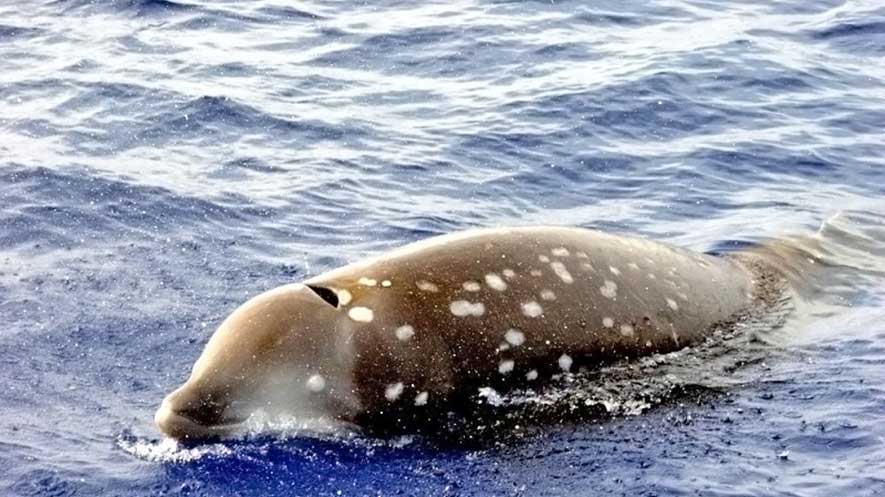Scientists used passive acoustic monitoring during 2010-2013 to detect the presence of beaked whales in the Gulf of Mexico. These animals are difficult to study visually because they spend little time at the sea surface and are only present in offshore deep waters; they are rarely found on the continental shelf and near-shore waters.
Analysis of acoustic recordings found two dominant beaked whale species in the Gulf, Gervais’ (66% of total encounters) and Cuvier’s (50% of total encounters). The Gervais’ whale was the dominate species at the western study sites (Mississippi Canyon and Green Canyon), and the Cuvier’s whale was the dominate species at the eastern study site (the Dry Tortugas). There were no beaked whale detections at sites on the continental shelf (Main Pass and DeSoto Canyon). This study provides data for modeling potential long-term whale population responses to the Deepwater Horizon spill and other environmental conditions. Researchers published their findings in Scientific Reports: Passive acoustic monitoring of beaked whale densities in the Gulf of Mexico.
Beaked whales dive deep (500 – 1,300 meters) and depend on echolocation pulses to find their prey, which is thought to be deep-water squid. The team estimated the whales’ population density during their deep dives by counting echolocation clicks on a weekly basis and also by determining whales’ presence or absence in five-minute periods. Results from both methods were in general agreement. Encounters of Gervais’ beaked whales were mainly in groups of two to five animals and Cuvier’s beaked whales were in smaller groups of one to four animals.
Study author John Hildebrand said, “Our study was the first time we were able to monitor the presence of these two beaked whale species.” Hildebrand explained that by listening to their sounds, they kept track of the whales in areas near the oil spill and in areas not directly impacted by the spill. Looking ahead, Hildebrand said, “We will apply the same method to several other species such as sperm whales and get a sense of how these deep-diving cetaceans of the Gulf responded to the spill.”



